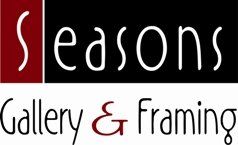FRAMING SERVICES
All picture framing is carried out on the premises.
We use the best quality conservation mounting board as standard, together with excellent quality wood and aluminium frames and the best quality glass. In fact we have over 500 samples of frames on the wall for you to look at – much easier than looking at photographs in a catalogue!
Every item we receive for framing is treated with care. Our aim is to both enhance the viewing of the artwork, and also ensure that the process of framing does not damage it in any way. The techniques we use aren't necessarily the quickest, but are the best for your artwork in the long term.
We provide on-the-spot free quotations for items brought into the shop. If you are unable to pop in and would like a free telephone quote, please contact us and we will do our best.
What we can frame
Basically, you name it and we'll frame it! We can frame:
- Fabrics - including needlework and tapestries (which we "stretch" first)
- Sports shirts (which we "stretch" and shape before framing)
- 3D objects - including coins, medals, dried flowers, rosettes etc.
- Prints - mounted or unmounted
- Watercolours
- Pastels - fixed or unfix
- Photographs (including Cibachrome)
- Oil Paintings and acrylics (which we can stretch onto a frame if required)
As well as full framing jobs we also do reframing jobs such as:
- reglazing (where the glass has broken for example)
- reframing (where the frame has been damaged or just needs updating)
- remounting or re-attaching artwork where it has slipped in the frame
- cutting just a mount to any shape (for you to take away and use yourself)
- glass only (for you to put in a frame yourself)
- mounting onto foam-board for display (with the option of heat-sealing)
We now have the latest computerised mount cutting machine which means we can cut mounts to any shape (or combination of shapes) you require.
Framing Options
If you already know what you want, we are happy to guide you through our ranges of mountboards, frames and glass. Our visualisation system can help here.
If you're not sure how to frame your artwork or object, then we are happy to provide a range of options. Our aim is to enhance the viewing of your artwork. The framing should complement rather than compete with the art.
Framing options include:
Mounts
- double mounts of contrasting colours (or even 3+ mounts)
- double thickness board (with extra wide bevels)
- painted lines on the mount (known as wash lines)
- slips (made of painted wood, perhaps in gold or silver, which slip under the edge of the mount to give a border round the artwork - often matching the frame)
- painted bevels (these can be changed from the usual white)
- really wide bevels (which we cover with decorative tape)
- decorative mounts, where we do decorative cuts into the mountboard
- raised mounts, where we put a space between the mounts to create a shadow
Frames
- we have a vast range of pre-finished frames, but we can also stain or paint the natural wood frames to a particular colour
- we can create a new frame by putting together two existing frames - this is particularly effective when framing oils and acrylics
- we can insert slips inside the rebate of the frame to space the artwork well away from the glass (these are sometimes known as shadow boxes)
Conservation Framing
Conservation framing is all about framing artworks or objects for the future. To do this we use the best materials and techniques to preserve them for future generations. This is as important for an irreplaceable photograph of a family member as for a valuable painting. The materials and techniques some framers use are cheaper, but can start to actively damage your artwork or object - even after a few years.
So what does conservation framing actually involve?
Although the materials and techniques can vary depending on what is being framed, there are probably four main things to consider:
1. How the artwork or object is attached into the frame
2. How the artwork will be mounted
3. What kind of undermount is used behind the artwork
4. What kind of glazing is used
Conservation Framing
MATERIALS
We use archival quality tapes where the glue is stable and water activated (this means it can be fully removed from the artwork in the future).
We have opened up many old frames (where the customer has asked us to reframe a picture) and have found a picture to be attached with sellotape, masking tape or even parcel tape. Unfortunately the glue on these tapes is not designed for long term use against anything valuable, so either fails (and the artwork drops down) or starts to seep into the paper. This often starts to turn the paper yellow or brown and eventually seeps all the way through to the front of the paper, distorting the artwork.
SKILLS & EXPERTISE
It is important that the artwork is attached in such a way that it is able to expand and contract as the temperature and humidity changes. For example, if it is taped all the way round it has nowhere to expand and so will cockle (buckle) over time. We attach artwork using the Fine Art Guild recommended method of using two t-hinges that only extend onto the back of the artwork by around 5mm. It is also important to attach the artwork to the undermount rather than the mount, as it is much better supported (and is not pulling the top edge of the mount out of position). For objects such as sports shirts and other fabrics, we will stitch these onto the undermount (some other framers use glue or staples).
